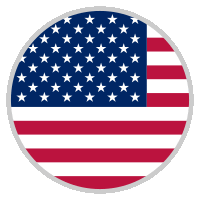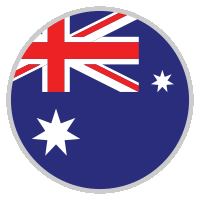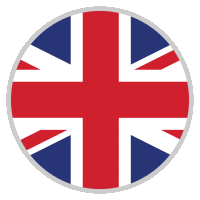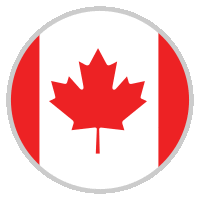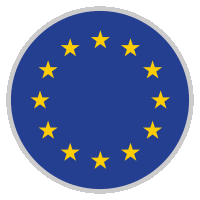Catalog No.
Product Name
Application
Product Information
Product Citation
- Aciclovir is an antiviral agent primarily used for the treatment of herpes simplex virus infections, as well as in the treatment of varicella zoster (chickenpox) and herpes zoster (shingles). It was seen as the start of a new era in antiviral therapy, as it is extremely selective and low in cytotoxicity.
- Kyra-Elisa Maria Redeker, .et al. , Biomolecules, 2022, Nov 9;12(11):1664 PMID: 36359014
- Takashi Azuma, .et al. , SEP PURIF TECHNOL, 2019, Apr; 212: 483-489
- Azuma T, .et al. , Environ Sci Pollut Res Int, 2017, Aug;24(23):19021-19030 PMID: 28660504
- Azuma T, .et al. , Sci Total Environ, 2016, Apr 1;548-549:189-197 PMID: 26802347
-
Antifungal compound
Amorolfine hydrochloride, is a morpholine antifungal reagent that inhibits D14 reductase and D7-D8 isomerase, which depletes ergosterol and causes ignosterol to accumulate in the fungal cytoplasmic cell membranes. - Amphotericin B is a polyene antifungal antibiotic from Streptomyces sp. Amphotericin B induces K+ leakage, which is separate from its lethal action, as was demonstrated in human erythrocytes and is due to the inhibitory effect on the Na+/K+ pump.
- J Chen, .et al. , Biomater Sci, 2020, Jun 21;8(12):3430-3442 PMID: 32406432
-
Protein synthesis inhibitor
Azomycin(2-Nitroimidazole) is an antimicrobial antibiotic produced by a strain of Nocardia mesenterica, which is active against aerobic Gram-positive and Gram-negative bacteria. - Aztreonam is a synthetic monocyclic beta-lactam antibiotic (a monobactam), with the nucleus based on a simpler monobactam isolated from Chromobacterium violaceum.
- Sreevalli Sharma, .et al. , ACS Infect Dis, 2021, Nov 12;7(11):3009-3024 PMID: 34699190
- Pholwat S, .et al. , PLoS One, 2019, May 10;14(5):e0216747 PMID: 31075137
- Robert Bucki, .et al. , Infect Drug Resist, 2018, 11: 77-86 PMID: 29391814
- Cefditoren pivoxil is a third-generation cephalosporin antibiotic for oral use.
- Cloxacillin is a semisynthetic antibiotic in the same class as penicillin. Cloxacillin is used against staphylococci that produce beta-lactamase, due to its large R chain, which does not allow the beta-lactamases to bind.
- Viktoria Lazar, .et al. , Nature, 2022, 610: 540-546 PMID: 36198788
- Levofloxacin is a fluoroquinolone antibiotic. It is active against S. aureus, S. epidermidis, B. subtilis, E. coli, P. aeruginosa, and K. pneumoniae (MICs = 0.25, 0.25, 0.5, 0.03, 4, and 0.25 μg/ml, respectively).
-
Protein synthesis inhibitor
Linezolid is a synthetic antibiotic used for the treatment of serious infections.- Viktoria Lazar, .et al. , Nature, 2022, 610: 540-546 PMID: 36198788
- Zewen Wen, .et al. , J Antibiot (Tokyo), 2022, Sep;75(9):498-508 PMID: 35896611
- Meikle V, .et al. , Antimicrob Agents Chemother, 2018, Nov 12. pii: AAC.01846-18 PMID: 30420480
- Polymyxin B Sulfate is a cationic surfactant antibiotic agent. A mixture of polymyxins B1 and B2, increases the permeability of the cell membrane.
- Pyrantel pamoate is a deworming agent in the treatment of hookworms (all species) and roundworms in domesticated animal; acts as a depolarizing neuromuscular blocking agent.
- Pyrazinamide is an antimycobacterial compound that inhibits the growth of the human M. tuberculosis H37Rv strain.
- Pyrimethamine(RP4753) is a medication used for protozoal infections; interferes with tetrahydrofolic acid synthesis from folic acid by inhibiting the enzyme dihydrofolate reductase (DHFR).
- Sitafloxacin is a new-generation, broad-spectrum oral fluoroquinolone that is very active against many Gram-positive, Gram-negative and anaerobic clinical isolates, including strains resistant to other fluoroquinolones, was recently approved in Japan for the treatment of respiratory and urinary tract infections. Sitafloxacin is active against methicillin-resistant staphylococci, Streptococcus pneumoniae and other streptococci with reduced susceptibility to levofloxacin and other quinolones and enterococci.
- Seyedeh Bita Mousavinafchi, .et al. , Food Sci Nutr, 2022, Nov 21;11(2):1142-1153 PMID: 36789060
- Tigecycline is bacteriostatic and is a protein synthesis inhibitor by binding to the 30S ribosomal subunit of bacteria and thereby blocking entry of Aminoacyl-tRNA into the A site of the ribosome during prokaryotic translation.
- Thanh Quang Nguyen, .et al. , Microbiol Spectr, 2023, Jun 15;11(3):e0063123 PMID: 37158736
- Zewen Wen, .et al. , J Antibiot (Tokyo), 2022, Sep;75(9):498-508 PMID: 35896611
- Xiaoming Liu, .et al. , J Antibiot (Tokyo), 2022, Aug;75(8):463-471 PMID: 35760902
- Sato T, .et al. , Microb Drug Resist, 2018, Jul/Aug;24(6):860-867 PMID: 29232167
- Dinah B. Aziz, .et al. , Front Microbiol, 2018, May 11 PMID: 29867841
- Toyotaka Sato, .et al. , Antimicrob Agents Chemother, 2017, Feb; 61(2): e01654-16 PMID: 27855067
- Bacitracin is a mixture of related cyclic polypeptides produced by organisms of the licheniformis group of Bacillus subtilis var Tracy, which disrupts both gram positive and gram negative bacteria by interfering with cell wall and peptidoglycan synthesis.
-
Neuraminidase Inhibitor
Peramivir is a neuraminidase inhibitor, acting as a transition-state analogue inhibitor of influenza neuraminidase and thereby preventing new viruses from emerging from infected cells.- Daisuke Kato, .et al. , PLoS One, 2018, 13(7): e0200761 PMID: 30001430
- Yuuki Kurebayashi, .et al. , PLoS One, 2016, 11(5): e0156400 PMID: 27232333
-
protein synthesis inhibitor
Retapamulin is an antibacterial agent, specifically a protein synthesis inhibitor- Merianne Mohamad, .et al. , Nucleic Acids Res, 2022, Feb 28;50(4):2128-2142 PMID: 35137182
- Avermectin B1a is an antiparasitic agent that paralyzes nematodes without causing hypercontraction or flaccid paralysis.
- PA-824 is an experimental anti-tuberculosis drug.
- Vijaya Bharti, .et al. , Cell Rep, 2022, Dec 20;41(12):111826 PMID: 36543138
- Thanh Quang Nguyen, .et al. , Antimicrob Agents Chemother, 2022, Dec 20;66(12):e0044822 PMID: 36321819
- Wang X, .et al. , Cell Chem Biol, 2019, Nov 7. pii: S2451-9456(19)30355-1 PMID: 31711854
- Alexandre López-Gavín, .et al. , Int J Antimicrob Agents., 2015, Nov;46(5):582-5 PMID: 26421981
-
HSV DNA replication inhibitor
Fiacitabine is a selective inhibitior of DNA replication of herpes simplex virus(HSV) with IC50 values of 2.5 nM and 12.6 nM for HSV1 and HSV2, respectively. - Faropenem daloxate is the first oral penem in a new class of beta-lactam antibiotics.
- Ganciclovir is an antiviral drug for feline herpesvirus type-1 with IC50 of 5.2 μM.
-
imidazole antifungal agent
Butoconazole nitrate (RS 35887), an imidazole antifungal agent, is active against Candida spp. and effective against vaginal infections due to Candida albicans. Butoconazole nitrate is presumed to function as other imidazole derivatives via inhibition of steroid synthesis. - Oseltamivir is an antiviral drug, which may slow the spread of influenza (flu) virus between cells in the body by stopping the virus from chemically cutting ties with its host cell.
- Butenafine Hydrochloride is an antifungal which is used to control dermal fungal infections such as athletes foot and ring worm.
- Naftifine is an allylamine antifungal drug for the topical treatment of tinea pedis, tinea cruris, and tinea corporis (fungal infections).
- Chlortetracycline hydrochloride is a specific and potent calcium ionophore antibiotic.
-
anti-fungal agent
Pseudolaric Acid B, a natural diterpenoid compound isolated from the root and trunk bark of Pseudolaric kaempferi Gordon, has anti-fungal and anti-fertility properties. - 2,3-Dimethoxybenzaldehyde (o-Veratraldehyde) is a benzaldehyde analog, with high antifungal activity (MIC=2.5 mM) .
-
midazopyridine amide compound
Q203 (IAP6) is a midazopyridine amide compound. Q203 is active against Mycobacterium tuberculosis H37Rv with an MIC50 of 2.7 nM in culture broth medium. - TMC207 is a first-in-class diarylquinoline compound with a novel mechanism of action, the inhibition of bacterial ATP synthase, and potent activity against drug-sensitive and drug-resistant TB.
- Thanh Quang Nguyen, .et al. , Microbiol Spectr, 2023, Jun 15;11(3):e0063123 PMID: 37158736
- Rubeshan Perumal, .et al. , Infect Drug Resist, 2023, May 9;16:2849-2859 PMID: 37193296
- Christian C Otum, .et al. , Sci Rep, 2023, Jun 6;13(1):9212 PMID: 37280265
- Thanh Quang Nguyen, .et al. , Antimicrob Agents Chemother, 2022, Dec 20;66(12):e0044822 PMID: 36321819
- Jinsheng Cui, .et al. , Mar Drugs, 2022, Jun 16;20(6):400 PMID: 35736203
- Bettina Schulthess, .et al. , Antimicrob Agents Chemother, 2022, May 17;66(5) PMID: 35420492
- Puyskens A, .et al. , Cell Host Microbe, 2019, Dec 23. pii: S1931-3128(19)30634-1 PMID: 31901518
- Belosludtsev KN, .et al. , Biochim Biophys Acta Biomembr, 2019, Jan;1861(1):288-297 PMID: 29920239
- Meikle V, .et al. , Antimicrob Agents Chemother, 2018, Nov 12. pii: AAC.01846-18 PMID: 30420480
- Belosludtsev KN, .et al. , Chem Biol Interact, 2018, Nov 26;299:8-14 PMID: 30496736
- Wu X, .et al. , Biochem Biophys Res Commun, 2018, Jan 1;495(1):267-272 PMID: 29107691
- Jichan Jang, .et al. , Antimicrob Agents Chemother, 2017, Jul; 61(7): e02637-16 PMID: 28416541
- Marco Fiorillo, .et al. , Aging (Albany NY), 2016, Aug; 8(8): 1593-1606 PMID: 27344270
- Alvaro A. Ordonez, .et al. , Antimicrob Agents Chemother, 2015, Jan; 59(1): 642-649 PMID: 25403669
- Ke Liu, .et al. , Drug Metab Dispos, 2014, May; 42(5): 863-866 PMID: 24513655
- Moxidectin is an anthelmintic drug which kills parasitic worms (helminths), and is used for the prevention and control of heartworm and intestinal worms.
-
non-ionic emulsifying agent
Polyoxyethylene stearate (POES) is a non-ionic emulsifying agent. - SQ109 is an orally active, small molecule antibiotic for treatment of pulmonary T(tuberculosis).
- Thanh Quang Nguyen, .et al. , Antimicrob Agents Chemother, 2022, Dec 20;66(12):e0044822 PMID: 36321819
-
DprE1 inhibitor
DprE1-IN-2 (compound 18) is a potent DprE1 inhibitor with an IC50 of 28 nM. DprE1-IN-2 has antituberculosis effect. -
squalene synthetase inhibitor
YM-53601 free base is a squalene synthetase inhibitor which suppresses lipogenic biosynthesis and lipid secretion in rodents. - PNU-176798 is an antimicrobial agent, targeting protein synthesis in a wide spectrum of gram-positive and anaerobic bacteria.
